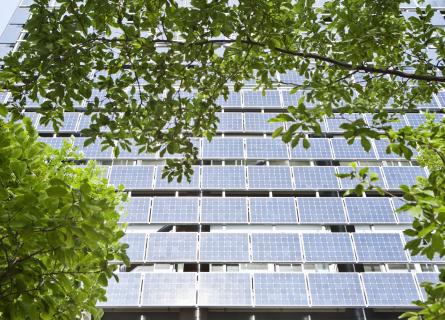
Solar PV cells’ journey towards the highest efficiency goals
Tackling climate change and limiting global temperature rise is a common challenge that no one can ignore.
All countries have reacted to this call for action, putting in place several measures in order to limit CO2 emissions and carbon footprints. To address climate change, governments are strongly pushing for sustainable solutions in the energy sector, and we are now witnessing a race to the harnessing of renewable sources in favour of the phase-out of fossil fuel emissions.
Among the renewable sources, it is a fact that solar power is the most popular, affordable and reliable energy source, with a current total installed capacity of almost 600 GW worldwide.
Photovoltaic (PV) technology is the most versatile. It can be used in utility-scale for commercial use, in mini-grid for small islands and atolls, floating PV cells on dam reservoirs or in the sea, installed on rooftops or on building facades.
But the crucial point is:
- Which is the most efficient and reliable PV technology?
- How to improve PV cells’ efficiency without making their lifecycle shorter or making them more vulnerable to defects?

Let’s compare the basic and traditional PV modules with the latest implemented solutions
Conventional PV modules have a very simple structure. They are made up of monofacial silicon cells (that can be mono or multicrystalline), connected together. These cells are encapsulated between a transparent front glass (which allows sunrays to hit the surface of the cells) and a non-transparent backsheet.
With the aim of improving the energy yield of the solar power plant, new PV technological solutions have been designed. The most important applications are the following:
- Bifacial: it represents the natural application of the bifacial solar cells together with dual glass modules. It can be considered the natural improvement of the conventional PV modules, with the application of a transparent back surface (typically glass but today also plastic materials are under research), and can improve the plant production thanks to the capture of diffuse irradiation also on the back of the modules.
- Multi-busbar: the number of busbars has been increased to three (or more) in most solar cells to improve efficiency. This result is achieved through the simplification of the flow of electrons. It is important to point out that a higher number of busbars impacts the manufacturing costs with a consequent increase in the final price of the modules.
- Half-cells: it is a matter of deliberately cutting a fully processed cell in half with very advanced laser machines (nowadays many manufacturers are starting the production of 1/3 cells). Considering this technological solution, it can be observed that in the half-cut (and 1/3) cells, the cutting of the cells, even if performed with highly technological machines, can cause potential issues:
- the laser cuts could cause electrical defects in the peripheral p/n junctions with consequent Rshunts and loss of power
- the laser cuts could also create dislocations in the perimeter of the Wafer with consequent future cracks
Furthermore, for the above reasons, it is easily understandable that with half-cut cells the difference in output power that modules with the same power have is higher than conventional cells.
From a financial point of view, the growth of the PV plant installations has also permitted a fast decrease of the cost of the modules. In the last five years, the selling cost decreased by about 60/70% and in the coming 5 years, an additional 30 % of decreasing cost is still expected.
It is, therefore, a fact that PV technology has seen major improvements in recent years in response to the ever-increasing demand for investments in solar power systems. Further growth will also be significant in the coming years.
However, we consider that the spasmodic search for the highest peak power cannot ignore the intrinsic technological limits of manufacturing processes. The risk is that the mentioned criticalities cause a decreasing of the module lifetime that will be evident only after several years of operation.
AFRY’s opinion is that the future leader in the PV cell manufacturing will be the one able to develop cutting-edge cheap ‘green’ materials (for instance with reusable materials) able to overcome the current constraints while ensuring at the same time maximum reliability, durability, efficiency and profitability.





